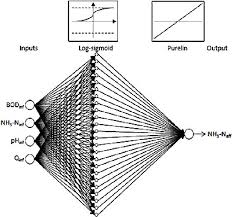The Best Neural Networks: Transforming Technology and Society
Published on October 20, 2023
Introduction to Neural Networks
Neural networks are a cornerstone of modern artificial intelligence, inspired by the human brain’s structure and function. They are designed to recognize patterns, learn from data, and make decisions with minimal human intervention. Over the years, neural networks have evolved significantly, leading to groundbreaking advancements in various fields.
Types of Neural Networks
Convolutional Neural Networks (CNNs)
CNNs are primarily used for image processing tasks. Their architecture is particularly effective at identifying patterns in visual data, making them ideal for applications such as facial recognition, medical image analysis, and autonomous driving.
Recurrent Neural Networks (RNNs)
RNNs excel in sequential data processing. They are commonly used in natural language processing (NLP) tasks such as language translation and sentiment analysis. RNNs can remember previous inputs due to their internal memory, which makes them suitable for time-series predictions.
Transformer Networks
Transformers have revolutionized NLP by enabling more efficient training on large datasets. They use attention mechanisms to weigh the importance of different words in a sentence. This has led to significant improvements in machine translation and text generation.
The Best Applications of Neural Networks
- Healthcare: Neural networks assist in diagnosing diseases by analyzing medical images and predicting patient outcomes based on historical data.
- Finance: In finance, neural networks help detect fraudulent transactions and predict stock market trends with high accuracy.
- Agriculture: By analyzing satellite images and sensor data, neural networks optimize crop yields and monitor environmental conditions.
- Entertainment: From recommendation systems on streaming platforms to AI-generated music and art, neural networks enhance user experiences across the entertainment industry.
The Future of Neural Networks
The future looks promising for neural networks as researchers continue to push the boundaries of what these systems can achieve. Emerging areas like quantum computing could further amplify their capabilities by providing unprecedented computational power.
Moreover, ethical considerations around AI development will shape how neural networks evolve. Ensuring transparency and fairness will be crucial as these technologies become increasingly integrated into everyday life.
Top 9 Advantages of Neural Networks: Transforming Industries and Enhancing Capabilities
- 1. Superior pattern recognition capabilities for image and data processing.
- 2. Efficient in handling sequential data, making them ideal for time-series predictions.
- 3. Revolutionizing natural language processing with advanced text analysis.
- 4. Enables complex tasks like facial recognition and medical image analysis.
- 5. Enhances user experiences through personalized recommendations in various industries.
- 6. Assists in diagnosing diseases and predicting outcomes in the healthcare sector.
- 7. Improves fraud detection and stock market trend predictions in finance.
- 8. Optimizes agricultural practices by analyzing environmental data for better crop yields.
- 9. Continuously evolving to meet the demands of emerging technologies and ethical considerations.
Challenges of Using the Best Neural Networks: Complexity, Resource Demands, and Interpretability
1. Superior pattern recognition capabilities for image and data processing.
Neural networks, particularly Convolutional Neural Networks (CNNs), showcase superior pattern recognition capabilities that are revolutionizing image and data processing. By mimicking the human brain’s ability to identify intricate patterns in visual data, CNNs excel in tasks such as image classification, object detection, and facial recognition. Their advanced architecture allows them to extract features from images with remarkable accuracy, making them indispensable in fields like computer vision, medical imaging, and autonomous driving. With their unparalleled ability to understand complex visual patterns, CNNs are at the forefront of transforming how we interpret and process vast amounts of image and data information.
2. Efficient in handling sequential data, making them ideal for time-series predictions.
Neural networks, particularly Recurrent Neural Networks (RNNs), excel in handling sequential data, making them well-suited for time-series predictions. By leveraging their ability to remember and process previous inputs, RNNs can analyze patterns over time and make accurate forecasts in various fields such as finance, weather forecasting, and stock market analysis. This efficiency in handling sequential data not only enhances the predictive capabilities of neural networks but also opens up new possibilities for applications requiring insights into trends and patterns over time.
3. Revolutionizing natural language processing with advanced text analysis.
One of the key advantages of the best neural networks is their capability to revolutionize natural language processing through advanced text analysis. These sophisticated systems, such as Transformer Networks, have significantly enhanced the way machines understand and generate human language. By utilizing intricate attention mechanisms and deep learning algorithms, neural networks can decipher complex linguistic patterns, improve language translation accuracy, and facilitate tasks like sentiment analysis and text summarization with remarkable precision and efficiency. This transformative ability to analyze and interpret textual data has paved the way for groundbreaking advancements in NLP applications across various industries.
4. Enables complex tasks like facial recognition and medical image analysis.
One significant advantage of the best neural networks is their ability to enable complex tasks such as facial recognition and medical image analysis. These advanced systems, particularly Convolutional Neural Networks (CNNs), excel in identifying intricate patterns within visual data, making them invaluable for applications requiring precise image processing. In fields like healthcare, neural networks play a crucial role in diagnosing diseases through the analysis of medical images, enhancing the accuracy and efficiency of medical professionals in interpreting complex imaging results. Their capability to handle such sophisticated tasks showcases the transformative potential of neural networks in revolutionizing various industries and driving technological advancements.
5. Enhances user experiences through personalized recommendations in various industries.
Neural networks, particularly in the form of recommendation systems, have revolutionized user experiences by providing personalized suggestions and content tailored to individual preferences. This capability enhances user engagement and satisfaction across a wide range of industries, including e-commerce, streaming services, social media platforms, and more. By leveraging advanced algorithms to analyze user behavior and preferences, neural networks can deliver relevant recommendations that cater to each user’s unique interests, ultimately creating a more personalized and enjoyable experience for consumers.
6. Assists in diagnosing diseases and predicting outcomes in the healthcare sector.
Neural networks play a vital role in the healthcare sector by assisting in the diagnosis of diseases and predicting patient outcomes. Through the analysis of medical images, patient data, and historical records, neural networks can provide valuable insights to healthcare professionals, helping them make more accurate and timely decisions. By leveraging the power of artificial intelligence, these advanced systems contribute to early disease detection, personalized treatment plans, and improved patient care, ultimately leading to better health outcomes for individuals around the world.
7. Improves fraud detection and stock market trend predictions in finance.
Neural networks have significantly enhanced fraud detection and stock market trend predictions in the field of finance. By analyzing vast amounts of financial data with high accuracy and speed, these advanced systems can identify suspicious patterns in transactions, helping to prevent fraudulent activities. Additionally, neural networks are adept at recognizing complex market trends and patterns, enabling investors to make informed decisions and predictions with greater confidence. This capability has revolutionized the way financial institutions operate and has led to more efficient risk management strategies in the dynamic world of finance.
8. Optimizes agricultural practices by analyzing environmental data for better crop yields.
One significant advantage of the best neural networks is their ability to optimize agricultural practices by analyzing environmental data to enhance crop yields. By processing vast amounts of information related to soil quality, weather patterns, and crop health, neural networks can provide valuable insights to farmers. This technology enables more informed decision-making, leading to improved efficiency in farming techniques and ultimately contributing to higher crop productivity and sustainability in agriculture.
9. Continuously evolving to meet the demands of emerging technologies and ethical considerations.
One of the key advantages of the best neural networks is their ability to continuously evolve in response to the demands of emerging technologies and ethical considerations. These advanced systems are designed to adapt and improve over time, staying at the forefront of innovation to address new challenges and opportunities. By integrating feedback, refining algorithms, and incorporating ethical principles into their development, the best neural networks ensure that they remain relevant, reliable, and responsible in a rapidly changing technological landscape.
Complexity
Neural networks, despite their powerful capabilities, present a significant challenge in terms of complexity. Designing and training neural networks demand a high level of expertise in various areas such as architecture selection, hyperparameter tuning, and data preprocessing. The intricate nature of neural networks can make the development process daunting for practitioners, requiring meticulous attention to detail and extensive experimentation to achieve optimal performance. The complexity associated with neural networks underscores the importance of skilled professionals who can navigate these challenges effectively to harness the full potential of this advanced technology.
Computational Resources
Training large neural networks can be a daunting task due to the con of computational resources. The process often requires substantial computing power, such as high-performance GPUs or TPUs (Tensor Processing Units). This demand for extensive computational resources can pose a challenge for individuals or organizations with limited access to such hardware, potentially hindering the widespread adoption and development of advanced neural network models. As technology advances, addressing this issue will be crucial to ensure that the benefits of neural networks can be realized across various applications while managing the associated resource requirements effectively.
Interpretability
One of the significant drawbacks of even the best neural networks is their lack of interpretability. Despite delivering remarkable performance across various applications, these models are often regarded as “black boxes.” This means that while they can produce accurate predictions or classifications, understanding the internal decision-making processes remains a challenge. The complexity and depth of neural networks make it difficult for researchers and practitioners to trace how specific inputs lead to particular outputs. This opacity poses concerns in critical fields like healthcare or finance, where understanding the rationale behind a decision is crucial for trust and accountability. As a result, enhancing the transparency and interpretability of neural networks has become an important area of ongoing research in artificial intelligence.



